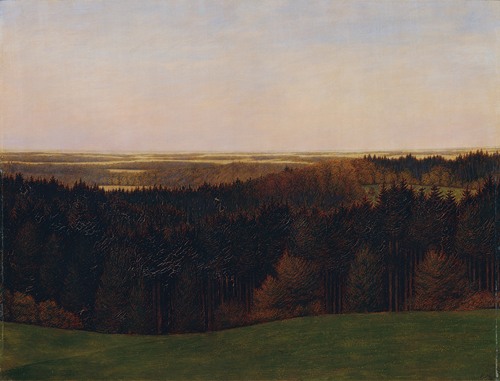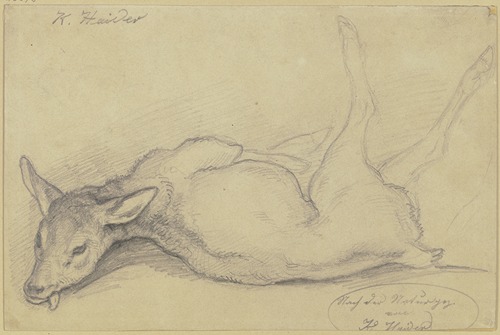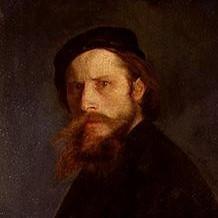



Karl Michael Haider, was a Bavarian landscape and portrait painter.
Haider was born on 6 February 1846 in Munich, the son to Max Haider (1807–1873), a forester from Anzing, and his wife Therese Fäßler (1811–1893). He was introduced to art by his father, who was also a cartoonist, and who taught him observation and drawing during forest walks.
Haider attended an arts high school in Munich, concentrating on training as a singer. While at the school he developed his interest in becoming a painter. He then entered a private painting school, after which, through the recommendation of his teachers, he attended the Munich Royal Academy of Fine Arts. While at the Academy he befriended and was influenced by Hans Thoma and Wilhelm Leibl; he joined the artistic circle around Leibl. Haider was particularly interested in the 15th- and 16th-century works of the German Albrecht Altdorfer and Hans Holbein the Elder, and the Dutch Jan van Eyck and Rogier van der Weyden.
When 29 years old Haider travelled to Florence where he copied and made woodcuts from old masters. There he met the symbolist painter Arnold Böcklin who invited him to his Tuscan villa. The two painters became friends despite sometimes having opposing views on art.
In the early summer of 1876 Haider returned to Munich where he became a freelance painter, although unsuccessfully. Museums and galleries rejected his paintings and only a few private commissions secured him a modest living, however, his work was appreciated by the critic Adolf Bayersdorfer. Heavily indebted, he received help from the Leibl circle, especially from Hans Thoma. In 1894, through intercession from the Academy, Haider was granted a small state pension, after which his artistic reputation and financial success increased. In 1897 his painting Autumn Evening was awarded a gold medal at the Munich International Exhibition. In following years Haider took short study trips to Austria, Hungary, and Italy; the influence of these trips were reflected in his paintings, particularly landscapes.
Haider showed three paintings as a member of the Deutscher Künstlerbund (Association of German Artists) in the 1904 Königsplatz exhibition, organized by the Munich Secessionists. The Munich Secession organised an exhibition of Haider's paintings on his birthday in 1911. He was awarded an honorary DPhil by the University of Breslau.
In 1874 Haider married Katharina, niece to the sculptor Friedrich Brugger. The marriage produced two daughters and a son, the painter Hubert Haider (1879–1971). Katharina died in 1882; Haider could not raise money for the funeral which was financed by the painter Franz von Lenbach. Haider's second marriage was to Ernestine Schwarz in 1890, the same year their son, Ernst (died 1988), was born. In 1896 the family settled in Schliersee, where Haider died on 8 October 1912, age 66. His tomb was designed by the sculptor Hermann Lang. A street in Schliersee was named after him.

